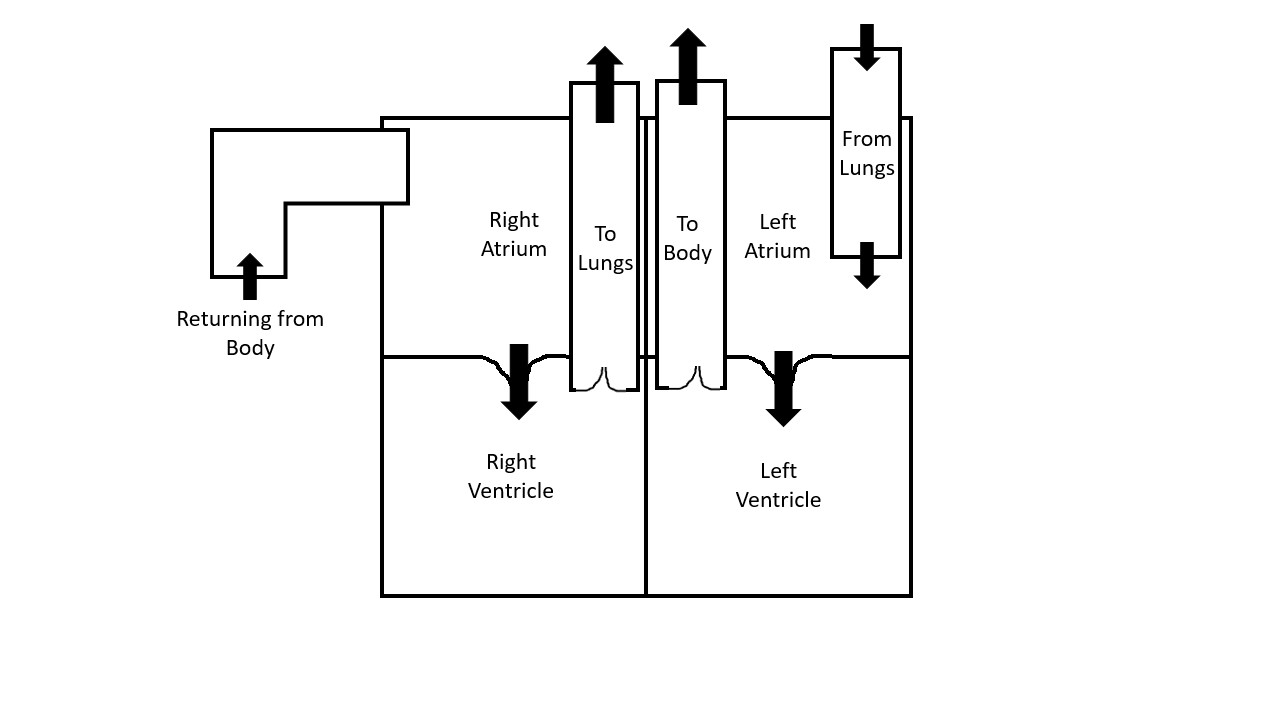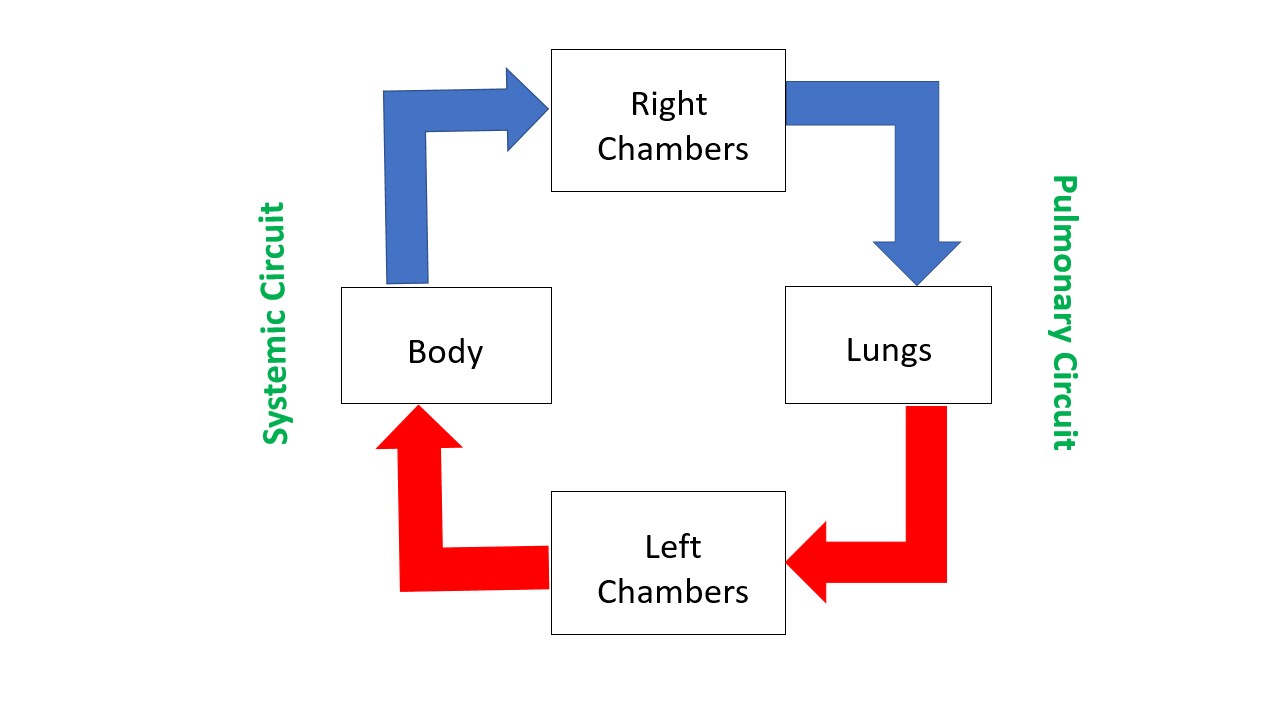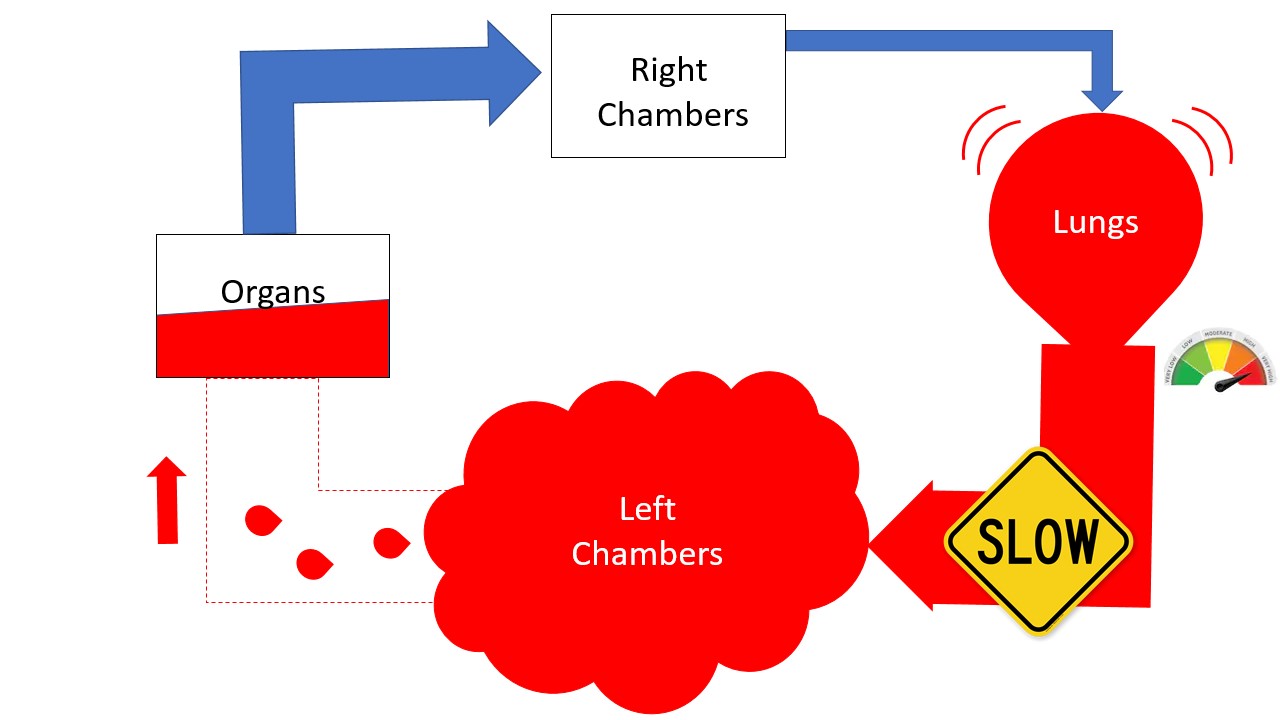
Pulmonary hypertension or high blood pressure in lungs
Pulmonary hypertension or high blood pressure in the lungs works differently than systemic hypertension.
The right chamber pumps the blood to the lungs to get oxygenated, which then returns to the left chambers. The left chamber then pumps the blood to the body to provide oxygen and nutrition, which returns to the right chambers (figure 1). The cycle repeats as the next batch of blood returns to the heart. This continues on, like a roller coaster ride, one car leaves with passengers to circulate the ride while the next car pulls into the station to receive more.

Thus, there are two parallel circuits. One going from the right chambers to the left and another from the left to the right (figure 2).

The two circuits have different characteristics, have two different blood pressures and show interdependence as well as independence of each other. Systemic circulation is the circuit connecting the left with the right, which goes through the body. Pulmonary (or lung) circulation is the other circuit which goes through the lungs (figure 2).
What causes high pressure in lung circuit or pulmonary hypertension?
Normally, the pressures within the systemic circuit are significantly higher than the pulmonary circuit. The pressures within the pulmonary circuit may rise and this is called pulmonary hypertension. There could be multiple reasons for the same.
When left chambers are to blame:
One of the most common reasons is the failure of the left heart pump. If the blood does not move forward from the left chambers, then the pressure built up within the chamber backs up into the pulmonary circuit. Just like at a traffic signal, if the cars at the front do not move when it turns green, the traffic gets backed up. So left ventricle failure (and excessive pressure built up) is one of the most common cause of high pressure in the lungs or pulmonary hypertension (figure 3).

When the lungs are to blame:
Some conditions in the lungs can raise the pressure within the lungs. Traffic backs up if 3 lanes in a 4-lane freeway are blocked. Similarly, if the pulmonary circuit gets blocked – from blood clots, from scar around the arteries called fibrosis or from unknown reasons called idiopathic, pulmonary hypertension results. Conditions causing long-standing low oxygen states, such as ‘COPD’, can result in changes in the pulmonary circuit called remodelling. This is like a 4-lane highway becoming 2-lane permanently. Undiagnosed and untreated sleep apnea (stopping to breathe while sleeping or snoring) can cause low oxygen states during sleep, again causing pulmonary hypertension.
For a more detailed description refer to the segment on pulmonary hypertension.
Follow on twitter.
All opinions expressed here are those of the author and not of the employer. Information provided here is for medical education only. It does not substitute for medical advice.
One Reply to “Pulmonary hypertension or high blood pressure in lungs”
Comments are closed.